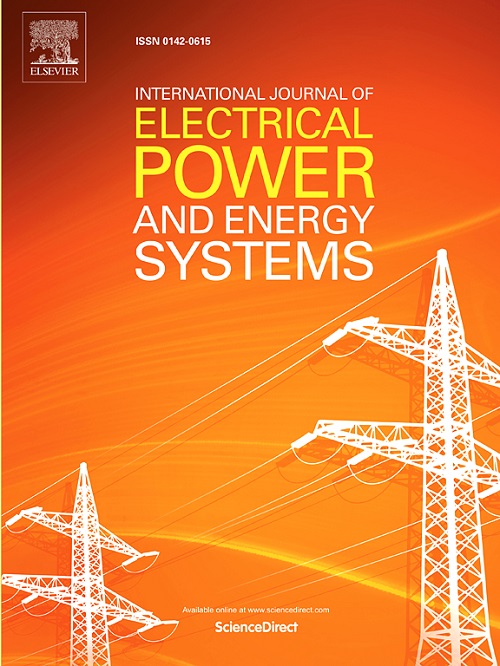An interpretable multi-dimensional feature space-based fault diagnosis method for UHVDC transmission line
IF 5
2区 工程技术
Q1 ENGINEERING, ELECTRICAL & ELECTRONIC
International Journal of Electrical Power & Energy Systems
Pub Date : 2025-09-22
DOI:10.1016/j.ijepes.2025.111157
引用次数: 0
Abstract
Accurate and rapid fault diagnosis is critical to the safe and stable operation of ultra-high-voltage direct current transmission systems. The limited protection time window restricts fault feature extraction and may result in protection misoperations, especially under complex fault conditions. To address these challenges, a novel diagnostic approach is proposed based on multi-dimensional feature space construction guided by fault information distribution. Physically interpretable features are first derived through circuit-theoretic analysis to ensure strong physical relevance. Principal Component Analysis is then applied to capture dominant statistical characteristics and reduce feature redundancy. XGBoost is subsequently employed to model nonlinear feature interactions and improve classification accuracy. Furthermore, SHapley Additive exPlanations are integrated to quantify individual feature contributions, facilitating feature space optimization and enhancing model interpretability. Simulation results show that the proposed method achieves accurate fault identification within a 1 ms window under fault resistances up to 500 and maintains robust performance across varying sampling frequencies.
基于可解释多维特征空间的特高压直流输电线路故障诊断方法
准确、快速的故障诊断对超高压直流输电系统的安全稳定运行至关重要。有限的保护时间窗口限制了故障特征的提取,并可能导致保护误操作,特别是在复杂的故障条件下。针对这些问题,提出了一种基于故障信息分布引导的多维特征空间构建的故障诊断方法。物理上可解释的特征首先通过电路理论分析得到,以确保强物理相关性。然后应用主成分分析来捕获主要统计特征并减少特征冗余。随后使用XGBoost对非线性特征相互作用进行建模,提高分类精度。此外,还集成了SHapley加性解释来量化单个特征的贡献,促进了特征空间的优化,增强了模型的可解释性。仿真结果表明,在故障电阻高达500 Ω的情况下,该方法在1 ms窗口内实现了准确的故障识别,并在不同采样频率下保持了鲁棒性。
本文章由计算机程序翻译,如有差异,请以英文原文为准。
求助全文
约1分钟内获得全文
求助全文
来源期刊
CiteScore
12.10
自引率
17.30%
发文量
1022
审稿时长
51 days
期刊介绍:
The journal covers theoretical developments in electrical power and energy systems and their applications. The coverage embraces: generation and network planning; reliability; long and short term operation; expert systems; neural networks; object oriented systems; system control centres; database and information systems; stock and parameter estimation; system security and adequacy; network theory, modelling and computation; small and large system dynamics; dynamic model identification; on-line control including load and switching control; protection; distribution systems; energy economics; impact of non-conventional systems; and man-machine interfaces.
As well as original research papers, the journal publishes short contributions, book reviews and conference reports. All papers are peer-reviewed by at least two referees.

 求助内容:
求助内容: 应助结果提醒方式:
应助结果提醒方式:


